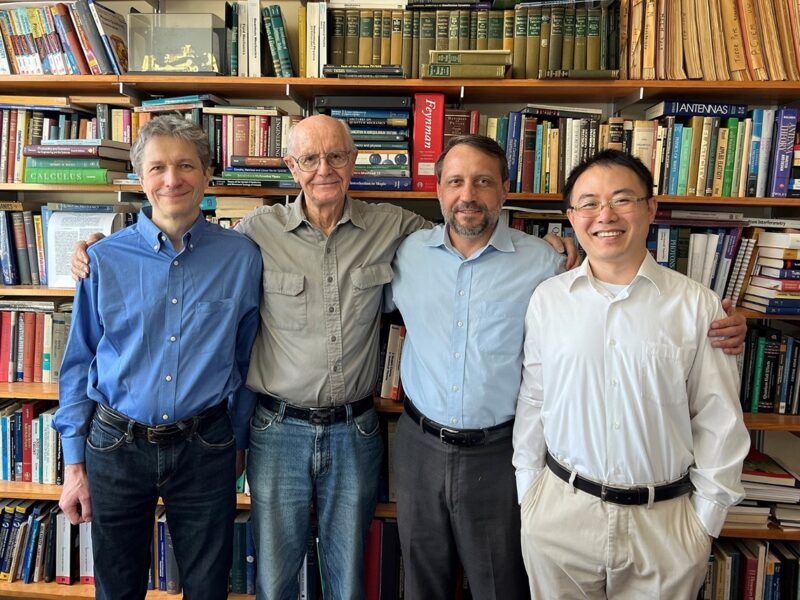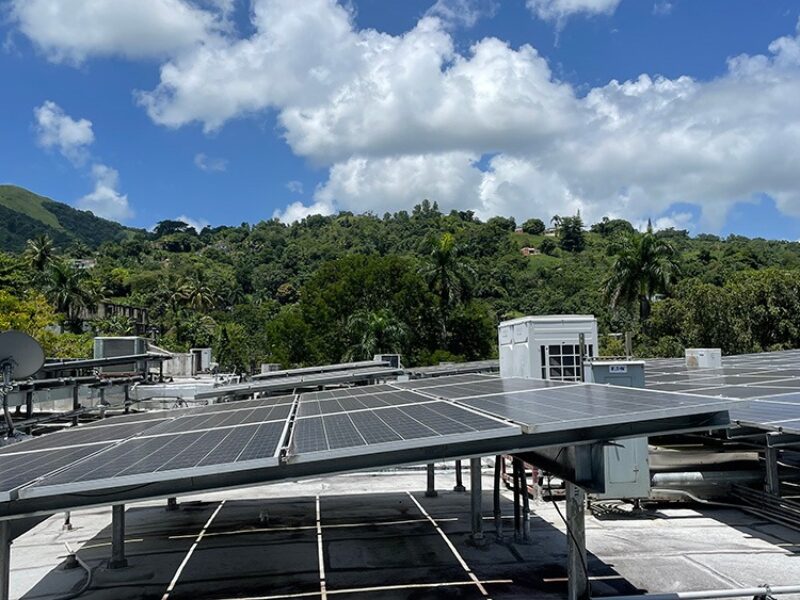Shamberger To Lead Investigation On Novel Heat-Storage Materials

Despite the abundance of renewable energy sources like solar and wind, the main hurdle in fully utilizing them in power generation and other potential uses is their intermittence and unpredictability – solar energy is only available during the day, and wind energy depends on daily weather patterns.
To investigate efficient ways to tap into these natural resources, the Department of Energy has awarded a three-year grant of $1.5 million to Department of Materials Science and Engineering Assistant Professor Patrick Shamberger and a team of faculty from Texas A&M University. With this funding, Shamberger will direct his efforts in discovering and developing phase-change materials that can be used to both store heat during times when solar energy is readily available and release heat on demand.
“This project comes from the realization that storing energy in the form of thermal energy in phase change materials is a far more efficient and cost-effective form of energy storage,” Shamberger said. “The targets of our program are less than $15 per kilowatts per hour, which is lower than the cost of storing that energy as electricity in a battery.”
As their name suggests, phase change materials change their physical state in response to heat. That is, they convert from solid to liquid when they store heat, and liquid to solid when they release their stored energy. Moreover, these phase changing materials can be designed to be reheated and cooled many thousands of times without compromising their functionality.
Building heating and cooling account for over 30 percent of the total residential electricity demand. By using phase-change materials, excess heat above a certain set temperature can be stored, maintaining the ambient temperature at a constant value during the day. At night, this heat stored in these materials can be used for keeping homes warm and for other purposes. Thus, these materials can directly contribute to reducing a complete dependency on the power grid for electricity, he said.
However, state-of-the-art commercial phase-change materials used in regulating building temperature are dominated by paraffins. These wax-like materials have a number of deficiencies, including flammability, low energy storage density and low thermal conductivity. These have limited the use of paraffins to store thermal energy in buildings.
As an alternative approach, the team of researchers will investigate the use of inorganic salt hydrates to store thermal energy. These compounds are cheaper and store more energy per unit volume, but they too have their own set of limitations that need to be addressed before they are a viable option.
“Inorganic salt hydrates require a comprehensive suite of associated technologies to reduce their inherent limitations, like supercooling and material corrosion,” Shamberger said. “This team of outstanding researchers is really built around addressing different aspects of advancing salt hydrate eutectics from ‘candidate materials’ to commercially feasible alternatives to accomplish the goal of reversibly storing thermal energy in buildings.”
In that regard, the team will focus on the discovery and testing of new inorganic salts using a combination of experiments and computational modeling, stabilizing these compounds through the use of a hydrogel matrix and microencapsulation, and improving thermal conductivity of these salts by embedding them into a carbon-based matrix, among other aims.
In the coming years, as solar and wind energy change the landscape of how consumers use energy to power their homes and businesses, a heightened emphasis on efficiently utilizing these energy resources without boosting costs is likely. With this grant, Shamberger said the team of Texas A&M researchers will be able to make important strides in the area of renewable energy storage and conversion using phase-change materials.
“This funding will be instrumental in shaping next generation technologies that will enable the use of energy more productively and efficiently by providing an alternate source of electrical energy at the demand site,” Shamberger said.
Shamberger shares the award with Svetlana Sukhishvili and Emily Pentzer from the Department of Materials Sciences and Engineering, Jonathan Felts and Choongho Yu from the J. Mike Walker ’66 Department of Mechanical Engineering and Charles Culp from the Department of Architecture.
This article by Dharmesh Patel originally appeared on the College of Engineering website.





